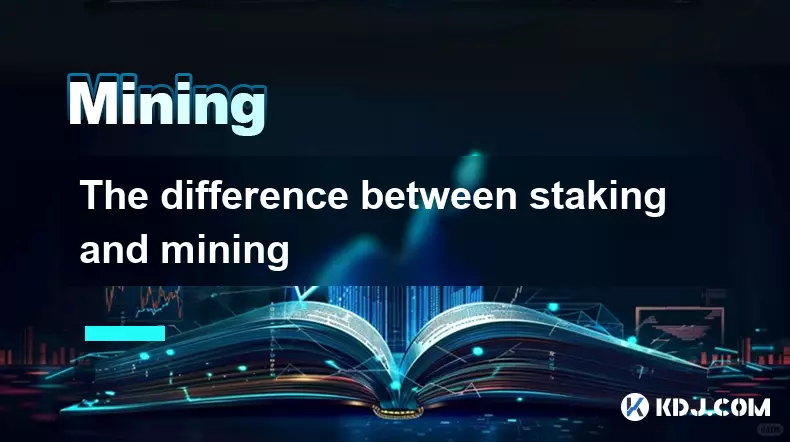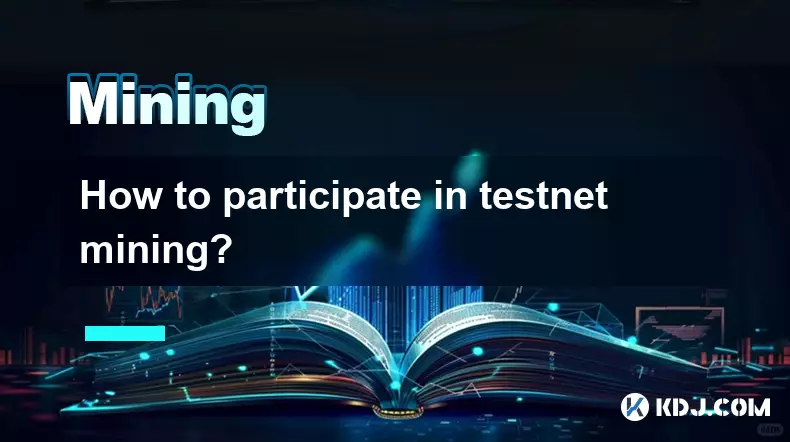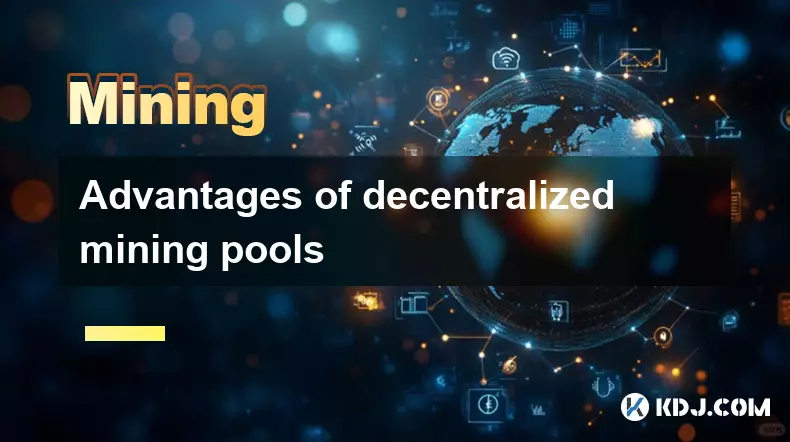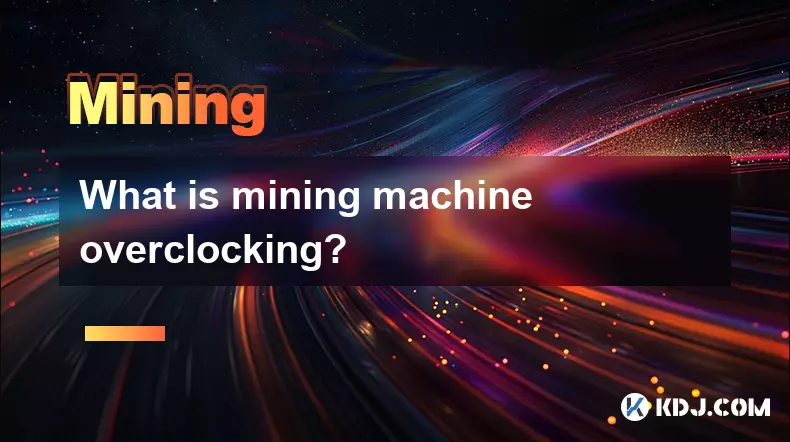-
 bitcoin
bitcoin $122659.385674 USD
0.52% -
 ethereum
ethereum $4484.113342 USD
-0.09% -
 bnb
bnb $1304.229256 USD
-0.85% -
 tether
tether $1.000204 USD
-0.03% -
 xrp
xrp $2.860636 USD
-0.51% -
 solana
solana $227.288799 USD
2.36% -
 usd-coin
usd-coin $0.999805 USD
0.01% -
 dogecoin
dogecoin $0.252837 USD
1.18% -
 tron
tron $0.341149 USD
1.12% -
 cardano
cardano $0.830507 USD
0.33% -
 hyperliquid
hyperliquid $45.792319 USD
0.04% -
 chainlink
chainlink $22.422164 USD
1.55% -
 ethena-usde
ethena-usde $1.000283 USD
0.01% -
 sui
sui $3.511389 USD
0.83% -
 stellar
stellar $0.385276 USD
-0.44%
How to get paid from a mining pool to your wallet?
To receive mining rewards, set up a compatible wallet, configure your payout address and threshold in the pool settings, and monitor your hashrate and share submissions via the dashboard.
Aug 13, 2025 at 11:35 am

Understanding Mining Pool Payout Mechanisms
Cryptocurrency mining pools aggregate the computational power of multiple miners to increase the probability of solving blocks and earning rewards. When a block is successfully mined, the reward is distributed among participants based on their contributed hash power. However, the method of distribution varies across pools. Common payout systems include Pay Per Share (PPS), Proportional, Pay Per Last N Shares (PPLNS), and Score-based models. Each method calculates earnings differently, and understanding which one your pool uses is essential to anticipate when and how you’ll receive payments. For instance, PPLNS rewards miners based on the number of valid shares submitted over a recent window, which can delay payouts if your contribution drops. In contrast, PPS offers immediate, consistent payouts but may charge higher fees.
Setting Up Your Wallet for Mining Rewards
Before receiving payments from a mining pool, you must have a compatible cryptocurrency wallet. The type of wallet depends on the coin being mined—Bitcoin, Ethereum, or another altcoin. Wallets can be software-based (like Electrum for BTC or MetaMask for ETH), hardware (such as Ledger or Trezor), or hosted on exchanges like Binance or Kraken. It’s crucial to ensure your wallet supports the specific blockchain and has a valid receiving address. To set up a software wallet, download the official application from the project’s website, create a new wallet, and securely back up the recovery phrase. Never share this phrase. Once the wallet is active, generate a deposit address—this is the public key you’ll provide to the mining pool. Always double-check the address format to avoid sending funds to an incompatible network.
Configuring Payout Settings in the Mining Pool
After joining a mining pool, access your account dashboard to configure payout settings. Most pools require you to input your wallet address under the Payout or Settings tab. Locate the field labeled “Payout Address” or “Withdrawal Address” and paste your wallet’s public address. Some pools allow you to set a minimum payout threshold, meaning payments are only sent once your balance reaches a specified amount (e.g., 0.001 BTC). This reduces transaction fees and network congestion. Ensure the threshold is reasonable—too high may delay your access to funds, while too low could result in frequent micro-transactions with high fees. Also, verify whether the pool supports automatic payouts or requires manual withdrawal requests. Enable email or SMS notifications if available to stay informed about payment status.
Monitoring Share Submissions and Hashrate
Your earnings depend on the number of valid shares your mining rig submits to the pool. A share is proof that your device has completed a portion of the work required to mine a block. Log into your mining pool dashboard regularly to monitor accepted shares, rejected shares, and reported hashrate. High rejection rates may indicate network latency, overclocking instability, or misconfigured mining software. To improve performance, ensure your mining rig is connected via a stable internet connection and that your mining software (like CGMiner, BFGMiner, or PhoenixMiner) is properly configured with the correct pool URL, port, and worker credentials. Each worker should have a unique name (e.g., “rig1” or “gpu02”) to help identify performance issues. Accurate hashrate reporting ensures fair reward distribution.
Receiving and Verifying Payments on the Blockchain
Once your balance meets the payout threshold, the mining pool will initiate a transaction to your wallet. This process may take minutes to hours depending on the pool’s payout schedule and blockchain congestion. To verify receipt, open your wallet and check the transaction history. Look for an incoming transaction from the pool’s known wallet address—many pools publish their outgoing addresses for transparency. You can also use a blockchain explorer like Blockstream.info for Bitcoin or Etherscan.io for Ethereum. Enter your wallet address into the search bar to view all associated transactions. Confirm the transaction ID (TXID), amount, and number of confirmations. Most pools wait for 1 to 6 confirmations before considering a payout final. If the transaction doesn’t appear within the expected timeframe, check the pool’s status page for delays or maintenance.
Troubleshooting Common Payout Issues
Occasionally, miners may not receive expected payments. First, verify that your payout address is correct and hasn’t been mistyped. Even a single incorrect character can send funds to an invalid or wrong address. Next, check if your balance is below the minimum payout threshold—many pools only disburse funds once this is met. If shares are being rejected at a high rate, your earnings will be lower than expected. Adjust mining software settings or reduce overclocking to stabilize performance. Network outages or pool downtime can also interrupt share submission. Use tools like ping or traceroute to test connectivity to the pool server. If the issue persists, consult the pool’s FAQ or support forum. Some pools require worker activation before counting shares—ensure your mining rig is recognized in the “Workers” section of the dashboard.
Frequently Asked Questions
Can I change my payout wallet address after setting it up?Yes, most mining pools allow you to update your payout address at any time through the account settings. However, changes may require email or 2FA confirmation for security. After updating, ensure future payouts go to the new address by testing with a small withdrawal if possible.
Why does my mining pool show earnings but no payment has arrived?This typically occurs when your balance hasn’t reached the minimum payout threshold. Pools only send transactions once this limit is met. Check your account’s payout settings to confirm the required amount. Also, some pools operate on a fixed payout schedule (e.g., daily), so delays within that window are normal.
Do mining pools charge fees for payouts?Some pools deduct a small fee (e.g., 1–3%) from each payout, while others charge only for administrative costs. These fees are usually outlined in the pool’s terms or dashboard. Additionally, blockchain network fees may be deducted separately, especially during periods of high congestion.
What happens if I mine with multiple rigs using the same wallet address?Using the same payout address across multiple rigs is safe and common. The pool aggregates all shares from your workers and sends a single consolidated payment to the address. Just ensure each rig uses a unique worker name to track performance individually.
Disclaimer:info@kdj.com
The information provided is not trading advice. kdj.com does not assume any responsibility for any investments made based on the information provided in this article. Cryptocurrencies are highly volatile and it is highly recommended that you invest with caution after thorough research!
If you believe that the content used on this website infringes your copyright, please contact us immediately (info@kdj.com) and we will delete it promptly.
- Whale Profit, Memecoins, and PEPE Volatility: A New Yorker's Take
- 2025-10-09 12:25:16
- BNB, MAGACOIN FINANCE, and ROI: Catching the Next Wave
- 2025-10-09 12:45:12
- BlockDAG, Formula 1, and Crypto Investing: A Winning Combination?
- 2025-10-09 12:25:16
- Shayne Coplan, Polymarket, and the POLY Token: Is Launch Imminent?
- 2025-10-09 12:30:03
- Trump Coin ETF, DTCC Listing, TRPC Ticker: A New Era for Political Meme Coins?
- 2025-10-09 11:40:03
- NYSE, Polymarket, and MAGACOIN: Wall Street Bets on Web3, Retail Traders Follow Suit
- 2025-10-09 11:40:03
Related knowledge

The difference between staking and mining
Sep 24,2025 at 05:18am
Understanding Staking in the Cryptocurrency Ecosystem1. Staking involves holding funds in a cryptocurrency wallet to support the operations of a block...

How to participate in testnet mining?
Sep 22,2025 at 09:18am
Understanding Testnet Mining in the Crypto Ecosystem1. Testnet mining is a method used by blockchain developers to simulate real-world conditions on a...

How to dispose of abandoned mining machines?
Sep 19,2025 at 08:19pm
Assessing the Condition of Abandoned Mining Rigs1. Begin by inspecting each mining machine for visible damage, corrosion, or missing components. Machi...

How to identify high-quality mining pools?
Sep 21,2025 at 03:19pm
Reputation and Track Record1. A mining pool’s reputation is built over time through consistent performance and transparency. Pools that have operated ...

Advantages of decentralized mining pools
Sep 20,2025 at 04:36pm
Enhanced Security and Resistance to Censorship1. Decentralized mining pools operate on blockchain-based smart contracts, eliminating the need for a ce...

What is mining machine overclocking?
Sep 21,2025 at 07:19pm
Understanding Mining Machine Overclocking1. Mining machine overclocking refers to the process of increasing the operating frequency of a cryptocurrenc...

The difference between staking and mining
Sep 24,2025 at 05:18am
Understanding Staking in the Cryptocurrency Ecosystem1. Staking involves holding funds in a cryptocurrency wallet to support the operations of a block...

How to participate in testnet mining?
Sep 22,2025 at 09:18am
Understanding Testnet Mining in the Crypto Ecosystem1. Testnet mining is a method used by blockchain developers to simulate real-world conditions on a...

How to dispose of abandoned mining machines?
Sep 19,2025 at 08:19pm
Assessing the Condition of Abandoned Mining Rigs1. Begin by inspecting each mining machine for visible damage, corrosion, or missing components. Machi...

How to identify high-quality mining pools?
Sep 21,2025 at 03:19pm
Reputation and Track Record1. A mining pool’s reputation is built over time through consistent performance and transparency. Pools that have operated ...

Advantages of decentralized mining pools
Sep 20,2025 at 04:36pm
Enhanced Security and Resistance to Censorship1. Decentralized mining pools operate on blockchain-based smart contracts, eliminating the need for a ce...

What is mining machine overclocking?
Sep 21,2025 at 07:19pm
Understanding Mining Machine Overclocking1. Mining machine overclocking refers to the process of increasing the operating frequency of a cryptocurrenc...
See all articles










































































